End of 2015 in Nepal: Blockade and Aftershocks.
Eight moths ago a devastating earthquake changed the life of many here in Nepal.
Even if our school and workshops were severely damaged we tried our best to help who lost everything and suffered more this disaster.
We shared this effort with the help of volunteers and donors from all around the world and this was possible also thanks to the contribution of our customers and friends.
During the following months many of our artists had to go to their villages to assist their families and try to fix their houses as they could.
Both these difficulties and the psychological implications of personal traumas, slowed down our work with the orders and we are truly sorry for the long delays.
Today the earth is still shaking (almost weekly) our damaged buildings but, sadly, this is not the only concern that people are fearing at this time.
In fact, since almost three months now, we have been facing an even more critical situation because of the blockade to the import of gas, petrol and other goods from India.
This is severely affecting the economy of the whole country, especially small business like ours, but majorly the people that are still in a very precarious conditions and who cannot afford to buy goods on the black market at a price 4 or 5 times higher.
Very little has been reported by the international media about the current crisis in our country and how the blind political game between the Indian and Nepali governments is effecting our daily life.
From an article of Associated Press posted few days ago:
The blockade of a key border point with India is leaving Nepal with only about 15 percent of its normal supply of gasoline, diesel and cooking fuel, and creating shortages of other goods including food and medicine.
Since most of Nepal’s imported goods flow through India, many businesses are being squeezed by the blockade. They are having a tough time paying rent, utility bills and employee salaries.
Because of these difficulties we decided to use our small resources to take care of our team of artists, especially our young students that we host in our school.
In fact, because of the cold temperatures at night here in Changunarayan and damages in the structure, we cannot use the school at this time and we decided to arrange a better accommodation for them.
At the same time we are trying to help also our master artists and their families, and the contribute of our customers is really important for them.
We hope that this blockade will end soon and with it the humanitarian crisis that many are facing. This would help our small business and school as well.
Again we apology for the delays.
Thanks for your patience, support and understanding.
Blessing
The team of TraditionalArtOfNepal.com
Supporting Micro Businesses in Nepal
Being in a small village like Changunarayan where traditional handcrafts are nurtured made me draw parallels with New Zealand and our own traditional crafts such as Maori wood carving, weaving and painting. New Zealand also has a very strong artisan culture; supporting potters, craftsmen jewellers, painters, clothing designers, sculptures and numerous handcrafts and locally made items. One of the worst things about opening the gates to free trade with China has meant the majority of New Zealand designed items are made off-shore. I am a keen advocate for supporting New Zealand made products. What a domestic market does for the country is create an investment in its people. When we source cheap, easy to reproduce products from China or India, we slowly but surely fritter away the skills needed in a labour force to keep the economy healthy. Nepal has suffered immensely from large earthquakes, so this small country needs it’s cottage industry’s to be supported through tourism. It needs to be able to re-invest in it’s people and find value in the local traditional artisans. I had five items of clothing made last week in Sankhu – the town where we have been doing earthquake volunteer work building shelters. In Nepal, women who wear the traditional clothing, have these items made from scratch. A seamstress will measure you up and make to order. Fabric is cheap and the variety is outstanding. Consequently there is a multitude of seamstresses (and tailors for the men) to be found, along with fabric shops. My five items included three tops in traditional Nepali style and two pairs of pants also in the same style. For fabric and construction the total cost was 37,000 Nepali Rupee – approximately $50 New Zealand dollars.Note that she sews on a treadle sewing machine!!
I was very happy with my clothing and the seamstress was very happy with my extravagant spend (five items at once is a big deal!). I sure hope that Nepal does not sell out to ready-made outfits sourced from India or China. I remember when my mother used to make my clothes. I also remember making my own clothes and also for my children. I remember when fabric shops were a common sight; when a seamstress or tailor would “suit you up”, and I also remember when “The Warehouse” came to town and ruined all of that. The lure of cheap stuff right now has eliminated New Zealand’s autonomy as a manufacturer and producer of everyday items. What this does is add more impetus to keep wages low; after all anyone can afford to shop at The Warehouse right? Sadly, only the middle to upper class can afford to shop New Zealand made and possibly in reality, only the upper class can really afford to do that. My hope for Nepal is that it will retain its wonderful traditional artisan culture and celebrate the wonderful quality products that are produced here.
Cashmere products for sale in Thamel. These are locally produced in Bhaktapur.
Felted products are everywhere in Nepal; ranging from purses to bags to booties and mobiles.
I would love for the rest of the world to see these products too and support Nepal’s growth by mindfully choosing Nepalese products over Chinese products. One of the beautiful aspects of being in this country is seeing these artisans going about their work – especially when it occurs in a small village like Changunarayan. That can only ever be good for a village such as this as it adds value to the experience of visiting for tourists, and embeds cottage industries into the character of small traditional communities.
Today I went shopping in Changunarayan to buy gifts. I spent 8500 Nepali Rupee (approximately $120 New Zealand dollars). For that I got the following:
One pair of pants
Two T-shirts
One long-sleeved shirt
One set of locally made gift cards
Eight “purses” of Himalayan tea
Four lampshades
Two stunning yak wool blankets
Six 100% pure cashmere “Pashmina” scarves/shawls
One wooden puppet
It feels wonderful to be able to support a small community by spending my money here. In Thamel (Kathmandu) I would be paying “tourist” prices and the street peddlers would be purchasing products from small villages where the items are produced (like Changunarayan) anyway and adding their mark-up on top.
You really do get a lot of “bang” for your buck in Nepal, but the impact of that buck spent, spreads far wider and deeper than a dollar spent in New Zealand.Kerenza Clark
Support the thangka school and the artists and artisans of our village

A Video of Changu While the Earth is Still Shaking in Nepal
If you are planning to visit Nepal and (like Chris) want to help and support our local NGO, please go to changunarayan.info and read more about the ongoing projects and volunteering program.
4.6 M aftershock rattles nation, epicenter Kathmandu #NepalQuake http://t.co/ZwsTzfKRyz pic.twitter.com/EwDHorMH1W
— The Kathmandu Post (@kathmandupost) July 22, 2015
Volunteering Projects in Changu Narayan, Nepal.
Dear friends,
Our team and Sunapati Thangka School is working hard to help the small community of Changu Narayan.
JOIN our New Donors/Self-Funded NGO.
More Info at ChanguNarayan.info
Rememer: sharing is caring.
Thank you.
How To Order
- Browse our catalog and choose your favorite design.
- Select your preferred size and quality to check the price.
- Click on “Product Inquiry” to send us a message and we will check if we the artwork is immediately available. If not we will make it for you.
- Use the cart page to calculate the shipping cost by selecting your country.
- Once we receive your order we will start creating the artwork according to your preferences and provide you with updates and images upon your request.
We strive to ensure a smooth shopping experience with our assistance. We also welcome commissions of custom designs of thangkas, masks and mandalas.
Shipping and Payments
We offer trusted shipping options to ensure your purchases arrive in perfect condition, and delivered in 5 to 10 working days worldwide. We accept PayPal, debit/credit cards and bank wire transfer services.
About Our Community
We live in Changunarayan, a UNESCO heritage site located on a forested hill overlooking Bhaktapur and the Kathmandu valley. You are welcome to visit our art school and meet our community of artists and artisans.
Learn More About Our Thangka School And Workshops
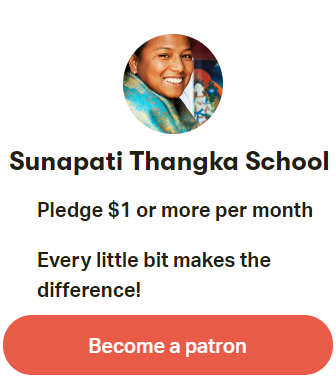
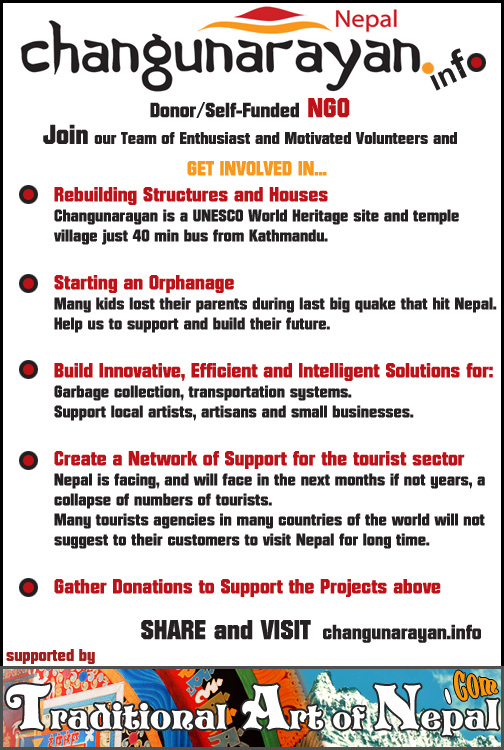
 Wisdom Eyes Mandala
Wisdom Eyes Mandala 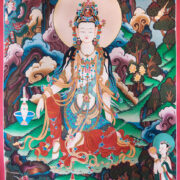 Quan Yin Thangka
Quan Yin Thangka 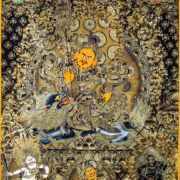 Five Jambhala Thangka
Five Jambhala Thangka 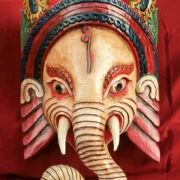 Ganesh Mask Design #01
Ganesh Mask Design #01 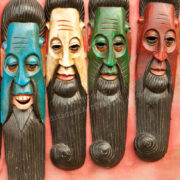 Sadhu Baba Masks
Sadhu Baba Masks  Kalachakra Mandala
Kalachakra Mandala  Universe Om Mandala
Universe Om Mandala 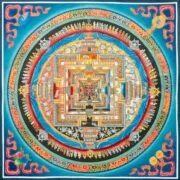 Kalachakra Mandala Auspicious Symbols
Kalachakra Mandala Auspicious Symbols 